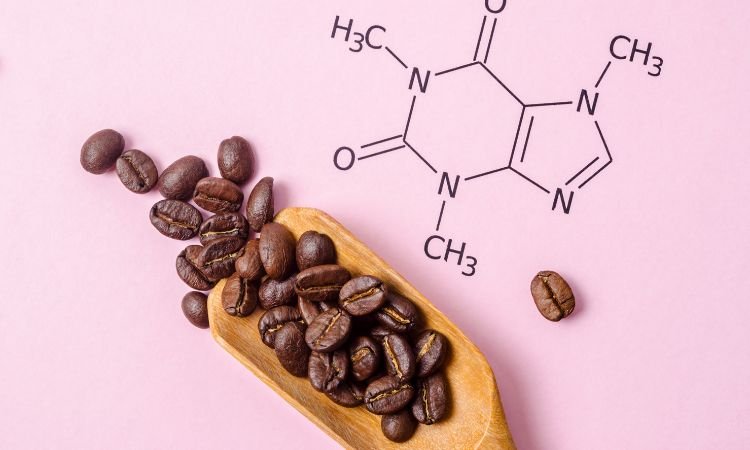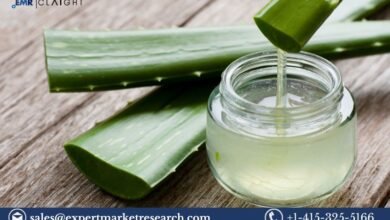
The global Anhydrous Caffeine Market Size has been witnessing substantial growth, driven by its widespread usage in pharmaceuticals, beverages, dietary supplements, and personal care products. Anhydrous caffeine, a dehydrated form of caffeine, is popular due to its enhanced concentration, stability, and long shelf life. The market is expected to expand at a compound annual growth rate (CAGR) of 8% during the forecast period from 2024 to 2032. This article delves into the key benefits, industry developments, driving and restraining factors, segmentation, regional insights, and challenges that shape the landscape of the anhydrous caffeine market.
Key Benefits of Anhydrous Caffeine
- High Potency: Anhydrous caffeine offers a concentrated form of caffeine that is easier to measure and integrate into various products, allowing for precise control over dosage.
- Long Shelf Life: Unlike liquid caffeine, the anhydrous form is highly stable, offering extended shelf life, which is particularly beneficial for product formulations in the pharmaceutical and dietary supplement industries.
- Enhanced Solubility: Its powdered form enhances solubility, making it ideal for use in beverages, energy drinks, and other liquid products.
- Improved Performance in Fitness Products: Known for its role in boosting energy, enhancing focus, and improving athletic performance, anhydrous caffeine is a popular ingredient in pre-workout supplements and weight-loss aids.
- Versatility in Application: Anhydrous caffeine is used in a wide array of industries, including pharmaceuticals, food and beverages, cosmetics, and nutraceuticals, adding to its market demand.
Key Industry Developments
- Increased Use in Dietary Supplements: The rising consumer interest in health and wellness has led to an upsurge in the use of dietary supplements containing anhydrous caffeine. Companies are innovating new products targeting weight loss, energy enhancement, and cognitive performance.
- Innovations in Beverages: Beverage manufacturers are increasingly adopting anhydrous caffeine for energy drinks and functional beverages. The trend is driven by growing demand for products that offer both flavor and health benefits.
- Expansion in Pharmaceutical Applications: Anhydrous caffeine is frequently used in over-the-counter medications such as pain relievers and headache remedies due to its ability to enhance the efficacy of pain-relieving ingredients.
- Collaborations and Acquisitions: Major companies are engaging in strategic collaborations and acquisitions to expand their market footprint. For instance, partnerships between beverage companies and caffeine suppliers have led to product innovations and expansion into untapped markets.
Driving Factors
- Growing Demand for Energy-Boosting Products: The global surge in demand for energy drinks, fitness supplements, and functional foods has been a key driver for the anhydrous caffeine market. Consumers are increasingly looking for products that enhance energy levels, focus, and performance, fueling market growth.
- Rising Health and Fitness Awareness: As consumers become more health-conscious, there is a growing preference for products that offer both mental and physical health benefits. Anhydrous caffeine, commonly found in workout supplements, aligns well with this trend, thus boosting demand.
- Increasing Pharmaceutical Use: The pharmaceutical industry’s reliance on anhydrous caffeine in formulations for pain relief, alertness, and migraine medications has contributed significantly to market growth.
- Shift Towards Natural Stimulants: Consumers are increasingly favoring natural alternatives over synthetic substances, and caffeine, being a naturally occurring stimulant, has seen rising demand, particularly in health-focused consumer segments.
Restraining Factors
- Health Concerns and Regulatory Issues: Despite its popularity, the excessive consumption of caffeine is linked to health risks such as insomnia, increased heart rate, and anxiety. Regulatory bodies such as the FDA monitor caffeine use, and stringent guidelines may limit market growth.
- Availability of Alternatives: The availability of other stimulants, such as taurine and guarana, which are also commonly used in energy drinks and supplements, poses competition for anhydrous caffeine. These alternatives often boast unique benefits that attract consumers away from caffeine-based products.
- Raw Material Price Fluctuations: The cost of coffee beans and other caffeine-producing materials can be volatile, affecting the pricing strategies and profit margins of companies involved in anhydrous caffeine production.
Market Segmentation
By Application
- Pharmaceuticals: Includes usage in pain relievers, stimulants, and alertness medications.
- Food and Beverages: Energy drinks, soft drinks, and snack bars.
- Dietary Supplements: Pre-workout supplements, weight-loss aids, and nootropic supplements.
- Cosmetics and Personal Care: Anti-cellulite creams and haircare products.
By Form
- Tablets/Capsules: Widely used in dietary supplements and pharmaceuticals.
- Powder: Popular in beverage formulations and pre-workout supplements.
By Distribution Channel
- Online Retail: E-commerce platforms, including Amazon and specialized supplement stores.
- Offline Retail: Supermarkets, drugstores, and specialty health shops.
Market Outlook
The global anhydrous caffeine market is poised for significant growth, driven by the continued rise in consumer demand for energy-enhancing products and dietary supplements. Increasing health awareness, coupled with the expansion of e-commerce channels, will also contribute to market expansion. The growing pharmaceutical sector is expected to remain a key market for anhydrous caffeine, with applications in pain relievers and cognitive enhancers further solidifying its importance.
The market’s CAGR of 8% from 2024 to 2032 underscores the increasing consumer demand for functional products across various industries, particularly within fitness, pharmaceuticals, and food and beverages.
Market Trends
- Rising Popularity of Functional Foods: The demand for functional foods that provide health benefits beyond basic nutrition, such as energy-boosting properties, has driven the adoption of anhydrous caffeine in food formulations.
- Growth in Sports Nutrition: The sports and fitness industry continues to grow, with anhydrous caffeine becoming a common ingredient in pre-workout supplements designed to enhance endurance, strength, and focus.
- Increasing Use in Personal Care: Caffeine’s antioxidant and anti-inflammatory properties have led to its inclusion in skincare products. It’s used in anti-aging, anti-cellulite, and eye creams due to its ability to improve circulation and reduce puffiness.
Regional Analysis
- North America: Dominates the market due to high demand for energy drinks and dietary supplements. The fitness industry in the U.S. plays a crucial role in market expansion.
- Europe: The growing demand for pharmaceuticals and the rising popularity of health supplements in countries like Germany, the U.K., and France support market growth.
- Asia-Pacific: Countries like China, Japan, and India are witnessing increased consumption of caffeinated beverages, and the expansion of the pharmaceutical industry is contributing to market growth.
- Latin America: The region is growing steadily, with Brazil leading in both consumption and production of caffeine products due to its large coffee industry.
Top Impacting Factors
- Health and Fitness Trends: Growing consumer awareness of the benefits of fitness and health supplements continues to drive the market for anhydrous caffeine.
- Expansion of Pharmaceutical Applications: Anhydrous caffeine’s role in medications for headaches and pain relief significantly impacts market growth.
- Regulatory Restrictions: Strict regulations regarding the permissible limits of caffeine in consumable products may restrict market expansion.
Target Audience
- Pharmaceutical Manufacturers
- Fitness and Supplement Brands
- Energy Drink Producers
- Skincare and Cosmetic Companies
- Research and Development Laboratories
Major Key Players in the Market
- Foodchem International Corporation
- BASF SE
- Aarti Industries Limited
- CSPC Pharmaceutical Group Limited
- Others
Opportunities
- Expansion in Emerging Markets: The growing demand for caffeinated products in emerging economies like India and China presents significant opportunities for market players.
- Technological Innovations: Innovations in the extraction process to improve the quality and purity of anhydrous caffeine can further enhance its applications.
Challenges
- Health Concerns: Addressing health-related concerns such as overconsumption and side effects will be key to sustaining market growth.
- Regulatory Compliance: Navigating the complex regulatory landscape across different regions remains a challenge for manufacturers.


